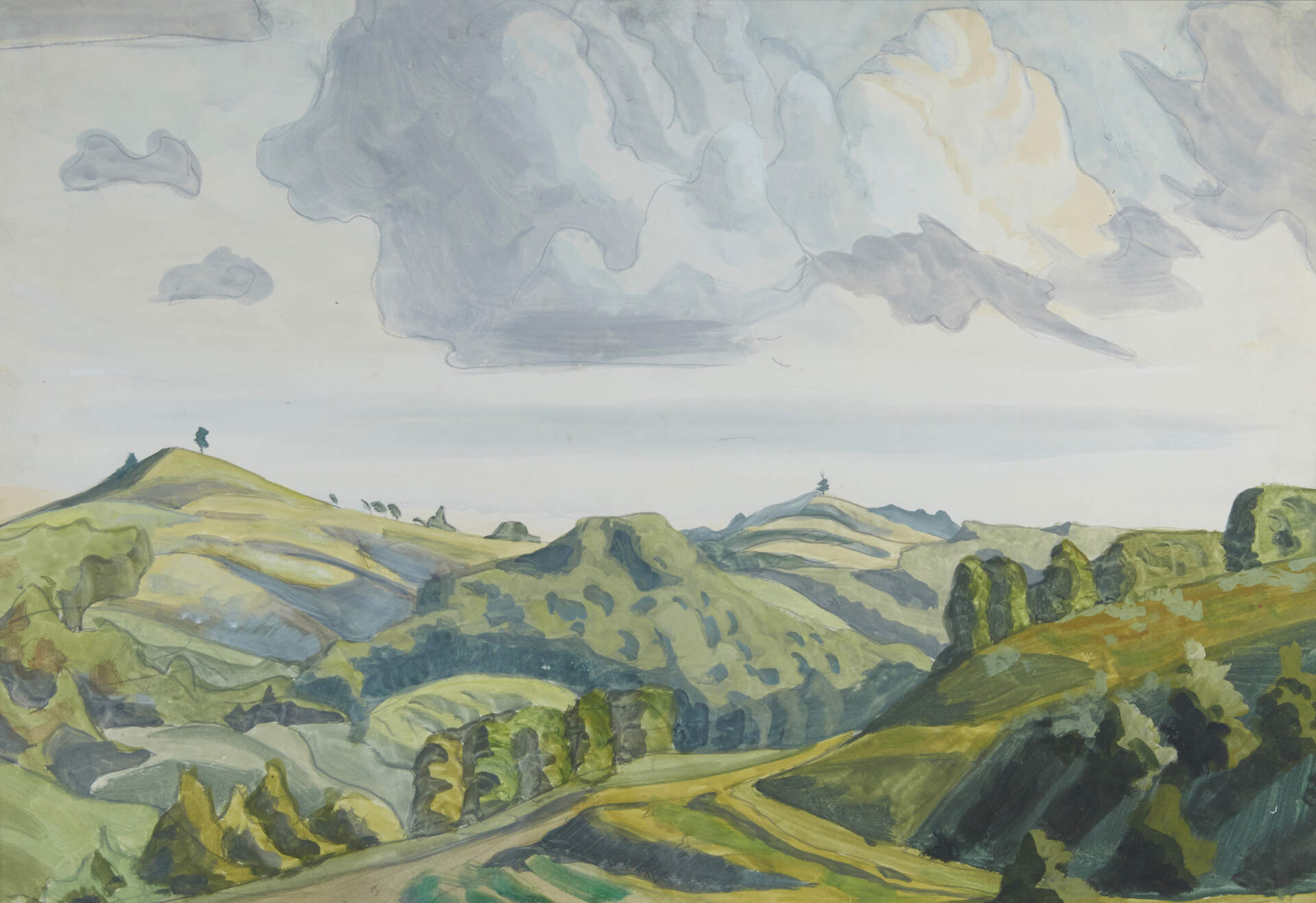Charles E. Burchfield (1893-1967)Untitled (Hilltops)
ca. 1920s
watercolor and pencil on paper
21 x 30 inches
Purchased with funds from Gary & Willow Brost, John & Carol Kociela, Cindy A. & Francis Letro, Monica Angle & Sam Magavern, Shelley & Ken Drake, Rita Argen Auerbach, James & Joy Brandys, Monica Angle & Sam Magavern, Jim & Joy Brandys, Joan & Gary Crosby
Enormous cumulus clouds coasting over rolling green hills usher in a new direction in Burchfield’s painting. “Gone was the bitterness of 1918 and ’19,” he explained. Back in Salem, Ohio, working again for the W. H. Mullins Co., he thrust himself into “painting as before with no letup in quantity of output.” He “fell under the charm of the realistic American Scene writers of that era.” He started painting the Mid-Western landscape to reflect Willa Cather’s “epic grandeur of post-pioneer life” and Russian author Maxim Gorky’s “wonderfully beautiful descriptions of the settings, of Nature, and weather events.”
Music also played an important role. 1920 was when he first heard the Largo from Symphony from the New World by Antonín Dvořák, a Czech composer who incorporated elements of folk music into his Romantic works. Burchfield’s audible recognition of indigenous roots fueled his own desire to paint his American experience. Meanwhile, his New York dealer Mary Mowbray-Clarke arranged his first solo exhibition at the Kevorkian Galleries on 57th Street. She wrote: “There is a recognizable musical element in his color and line, intense, nervous, vibrant….” Heady with the success of several sold works, he was “emboldened” to take a summer’s leave of absence from his job, and “spent the whole season painting cloud effects.” He painted the vastness of space, fluctuations of weather, and ever-changing light and colors. —NW
